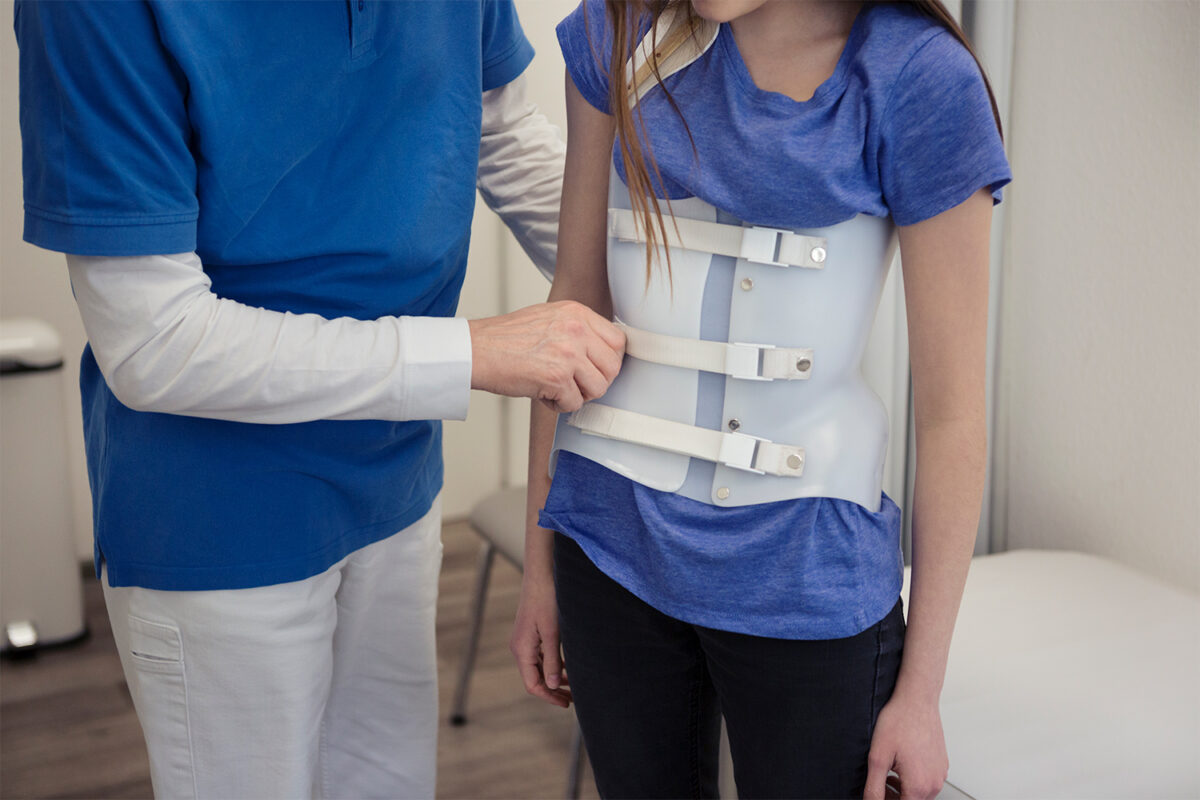Scoliosis is a medical condition characterized by an abnormal curvature of the spine. It affects millions of people worldwide, with varying degrees of severity. While surgery is often considered for severe cases, scoliosis braces are commonly used to manage and correct the curvature in less severe cases. The success rate of these braces is a crucial factor in determining their effectiveness and the overall treatment outcome. This article aims to evaluate the effectiveness and success rates of different scoliosis braces, considering various factors that may influence their outcomes.
Ortesis para escoliosis
Scoliosis braces are orthopedic devices designed to support the spine and prevent further progression of the curvature. They work by applying pressure on specific areas of the spine, guiding it towards a more normal alignment. Braces are typically prescribed for adolescents with moderate scoliosis, as their bones are still growing and can be molded. However, adults with scoliosis may also benefit from braces to alleviate pain and discomfort.
Types of Scoliosis Braces
There are several types of scoliosis braces available, each with its own design and purpose. The most commonly used braces include the Boston Brace, Charleston Bending Brace, Milwaukee Brace, Providence Brace, TLSO (Thoracolumbosacral Orthosis) Brace, and SpineCor Brace. These braces differ in their construction, materials used, and the areas of the spine they target.
Factors Affecting Success Rates
Several factors can influence the success rates of scoliosis braces. The age of the patient, the severity and location of the curvature, compliance with brace wear, and the duration of brace treatment are all important considerations. Additionally, the expertise of the orthotist in fitting and adjusting the brace, as well as the patient’s commitment to physical therapy and exercise, can significantly impact the success of the treatment.
Research Methodology
To evaluate the effectiveness and success rates of different scoliosis braces, a comprehensive review of existing literature and studies was conducted. Various databases, including PubMed and Google Scholar, were searched using keywords such as “scoliosis brace,” “brace success rate,” and “brace effectiveness.” Studies that assessed the outcomes of different braces, including their impact on curve progression, pain reduction, and patient satisfaction, were included in the analysis.

Evaluating the Effectiveness of Boston Brace
The Boston Brace is one of the most widely used scoliosis braces. It is a custom-made, rigid brace that covers the torso and applies corrective forces to the spine. Several studies have reported positive outcomes with the Boston Brace, with success rates ranging from 70% to 90%. For example, a study published in the Revista de ortopedia pediátrica found that 80% of patients treated with the Boston Brace had a successful outcome, defined as a curve progression of less than 5 degrees.
Assessing the Success Rate of Charleston Bending Brace
The Charleston Bending Brace is a unique brace that is worn only at night. It applies a corrective force to the spine while the patient is in a side-bending position. Although there is limited research on the success rate of the Charleston Bending Brace, a study published in the Revista de ortopedia pediátrica reported a success rate of 75% in patients who wore the brace for an average of 8 hours per night.
Examining the Results of Milwaukee Brace
The Milwaukee Brace is a full-torso brace that extends from the neck to the pelvis. It is primarily used to treat thoracic curves and is often prescribed for patients with a high degree of flexibility. Studies evaluating the success rate of the Milwaukee Brace have shown mixed results. While some studies reported success rates of around 70%, others found lower success rates, ranging from 30% to 60%. Factors such as patient compliance and the severity of the curvature may contribute to these variations.

Analyzing the Effectiveness of Providence Brace
The Providence Brace is a dynamic brace that uses a combination of pressure points and elastic bands to correct the curvature. It is designed to be more comfortable and less restrictive than traditional rigid braces. Studies evaluating the effectiveness of the Providence Brace have reported success rates ranging from 60% to 80%. For instance, a study published in the Revista de ortopedia pediátrica found that 70% of patients treated with the Providence Brace had a successful outcome.
Comparing Success Rates of TLSO and SpineCor Braces
The TLSO Brace and SpineCor Brace are two alternative options for scoliosis treatment. The TLSO Brace is a rigid brace that covers the torso, while the SpineCor Brace is a flexible, dynamic brace that uses a series of elastic bands. Studies comparing the success rates of these braces have shown mixed results. Some studies have reported similar success rates between the two braces, while others have found higher success rates with the SpineCor Brace. Factors such as patient age, curve type, and compliance may influence the outcomes.
Factors Influencing Brace Success
Several factors can influence the success of scoliosis braces. Patient compliance with brace wear is crucial, as consistent and proper use of the brace is necessary for optimal results. Additionally, the expertise of the orthotist in fitting and adjusting the brace plays a significant role. The patient’s commitment to physical therapy and exercise, as well as their overall health and lifestyle, can also impact the success of the treatment.

Conclusion and Recommendations
In conclusion, scoliosis braces can be effective in managing and correcting spinal curvature, particularly in adolescents with moderate scoliosis. The success rates of different braces vary, with the Boston Brace and Providence Brace showing relatively higher success rates. Factors such as patient compliance, brace design, and the expertise of the orthotist are important considerations in achieving successful outcomes. Further research is needed to compare the long-term effectiveness of different braces and to identify the most suitable brace for specific patient populations. Orthopedic specialists should carefully evaluate each patient’s condition and consider these factors when selecting the appropriate scoliosis brace.

